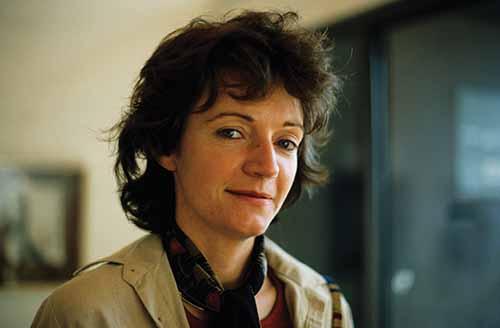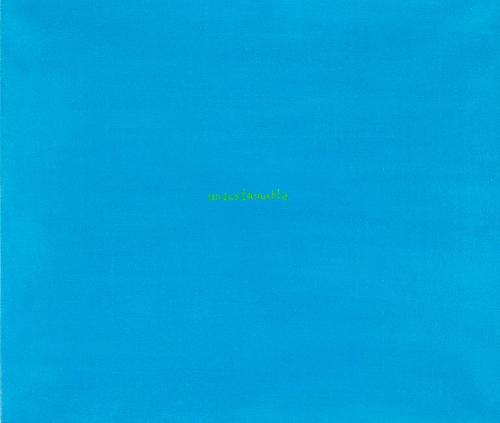
The extreme climate of Nicholas Folland is the title of both an exhibition at the Art Gallery of South Australia and an essay by Lisa Slade for the latest in the annual Wakefield Press monograph series on contemporary South Australian artists. Dispensing with the conventional linear analysis of Nicholas Folland's career, Slade’s text is made up of eight chapters dedicated to specific strands of the artist’s practice. Each section is augmented with apposite images, and includes historical works from AGSA’s collection many of which hang in the exhibition. It is a refreshing and often illuminating approach.
Necessarily absent from the exhibition at the Art Gallery of South Australia are some of the artist’s most ambitious, scene-stealing, site-specific works (well-documented in the book): the gushing waters of a submerged bathroom in the audacious Raft (2003) installation at the Experimental Art Foundation, Floe’s dramatic, four-metre agglomeration of suspended crystal glassware at the Anne & Gordon Samstag Museum of Art in 2009 or his more recent installation intervening in the colonial galleries for the 2012 Adelaide Biennial.
Slade presents a selection of the artist’s works from the last decade interspersed with historical and contemporary works which chime with Folland’s interconnected themes of pioneering exploration, the ocean, ships, mariners and (reconfigured) cartography. Imbued with narratives of hope, endeavour and (frequently) failure and loss, it is instructive to learn that his concerns also have a personal imperative. Tragically, the children of Charles and Charlotte Folland - who migrated to South Australia from England in 1839 – were two of the 30 fatalities during that arduous voyage. Another of Folland’s ancestors disappeared at sea in 1805. Through a continual reworking of a selective repertoire of elements – water/ice, taxidermy, found objects, maps, light and most notably cut glass or crystal – the artist has developed a metaphorical language of materials, in which volatility, fragility and even danger are implicit.
Am I missing something ... (2014), in which encroaching ice threatens to overwhelm a chandelier inevitably recalls Folland’s ice-encrusted chandelier exhibited in the NGV’s 2004: Australian Culture Now. It is juxtaposed with an engaging grouping of glacial works including James Francis Hurley’s remarkable 'glacial fairyland’ photographic images of Antarctica, Narelle Jubelin’s 1988 embroidery of Sir Douglas Mawson and Folland’s enigmatic wall patterns generated by the pleasing effect of light on a configuration of crystal vases. Similarly, Folland’s found sailboat Doldrum (2005) is ascribed a richer context with a backdrop of two-dimensional representations of sailing vessels by Laith McGregor, Ian North, an 1839 watercolour of a large sailing ship in Holdfast Bay by Colonel William Light and Benjamin Travers Solly’s Wreck of the Hastings, Port Adelaide Bar (1851).
In partitioning The extreme climate of Nicholas Folland into glacial and arid zones, Slade echoes and underscores the ‘tension of oppositions and inversions’ critical to Folland’s practice. The result is a consistently measured exhibition which, with the introduction of both historical and contemporary thematically pertinent material, offers thoughtful insights into the artist’s practice.












